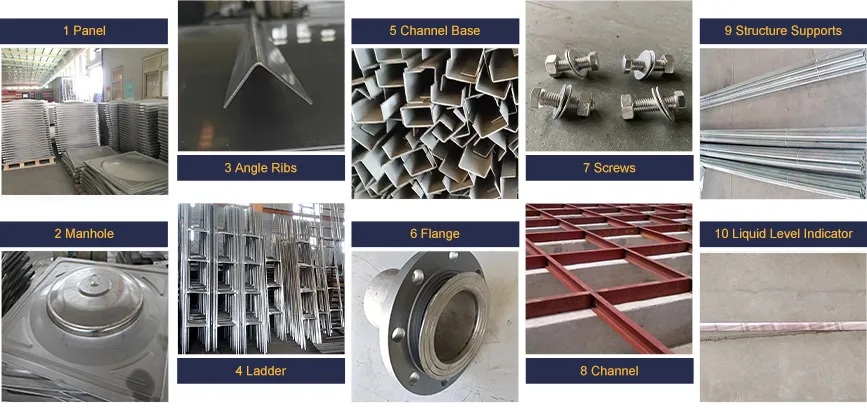loading...
- No. 9, Xingyuan South Street, Dongwaihuan Road, Zaoqiang County, Hengshui, Hebei, China
- admin@zjcomposites.com
- +86 15097380338
- Welcome to visit our website!
glass fiber reinforced polymer bars
The Rise of Glass Fiber Reinforced Polymer Bars in Modern Construction
In recent years, the construction industry has witnessed a significant shift towards the use of advanced materials that offer enhanced performance characteristics. One such material gaining prominence is glass fiber reinforced polymer (GFRP) bars. These innovative components are transforming traditional building practices, providing a myriad of advantages over conventional materials like steel and concrete. This article explores the properties, applications, and benefits of GFRP bars in modern construction projects.
What are GFRP Bars?
Glass fiber reinforced polymer bars are composite materials made by combining glass fibers with a polymer matrix. This fusion results in a lightweight, durable, and corrosion-resistant product. The glass fibers provide the necessary strength and stiffness, while the polymer matrix binds them together and adds further protective qualities. GFRP bars can be produced in various sizes and configurations, including rods and rebar, making them suitable for diverse applications.
Advantages of GFRP Bars
1. Corrosion Resistance One of the standout features of GFRP bars is their resistance to corrosion. While traditional steel reinforcement can degrade over time when exposed to moisture and chemicals, GFRP bars remain unaffected. This characteristic is particularly beneficial in environments exposed to harsh chemicals, salts, or extreme weather conditions, such as marine, industrial, or coastal structures.
2. Lightweight GFRP bars are significantly lighter than steel, making them easier to handle and transport. This property not only reduces labor costs during installation but also lowers transportation expenses. Additionally, the reduced weight can lead to less overall structural mass, which can lead to further savings in foundation requirements.
3. High Strength-to-Weight Ratio GFRP bars possess a considerable strength-to-weight ratio, allowing them to bear substantial loads without compromising their structural integrity. This capability makes them ideal for applications requiring high tensile strength while minimizing weight.
4. Non-Magnetic and Non-Conductive GFRP materials are non-magnetic and non-conductive, making them suitable for applications in sensitive environments, such as electrical and telecommunication installations. This property eliminates interference with electronic devices and avoids hazards associated with electrical conductivity.
glass fiber reinforced polymer bars

5. Design Flexibility The manufacturing processes for GFRP bars allow for greater design flexibility compared to traditional materials. They can be engineered to meet specific loading requirements and can be integrated seamlessly into various structural designs.
Applications of GFRP Bars
GFRP bars are increasingly being utilized in various construction applications
- Reinforcement in Concrete Structures GFRP bars are being used to reinforce concrete in applications like bridge decks, parking structures, and buildings. Their corrosion resistance helps extend the lifespan of these structures, reducing maintenance costs over time.
- Water and Wastewater Treatment Facilities Due to their resistance to chemicals and moisture, GFRP bars are particularly advantageous in water treatment plants, sewage facilities, and other environments where traditional materials may fail.
- Marine Structures Coastal constructions, such as piers, seawalls, and docks, benefit from GFRP's ability to withstand harsh marine environments, providing a long-lasting solution against saltwater corrosion.
- Infrastructure Rehabilitation GFRP bars are also used in the rehabilitation of existing structures. They can be retrofitted into aging buildings and bridges to enhance strength and extend their service life.
Conclusion
The integration of glass fiber reinforced polymer bars into construction practices represents a substantial advancement in material science. Their unique combination of lightweight, corrosion resistance, and high strength offers significant benefits over traditional reinforcement materials. As the construction industry continues to evolve and prioritize sustainability, GFRP bars are poised to play a crucial role in the development of durable, cost-effective, and innovative solutions. With ongoing research and advancements in composite technologies, the future for GFRP in the construction sector looks exceedingly promising, heralding a new era of material performance and design flexibility.
-
Transform Your Spaces with FRP Grating SolutionsNewsNov.04,2024
-
The Versatility and Strength of FRP RodsNewsNov.04,2024
-
The Excellence of Fiberglass Water TanksNewsNov.04,2024
-
The Benefits of FRP Grating for Your ProjectsNewsNov.04,2024
-
Elevate Your Efficiency with FRP Pressure VesselsNewsNov.04,2024
-
Welcome to the World of FRP Pressure VesselsNewsOct.12,2024
-
Unveiling the Future of Filtration: Why FRP Filter Vessels are a Game ChangerNewsOct.12,2024
